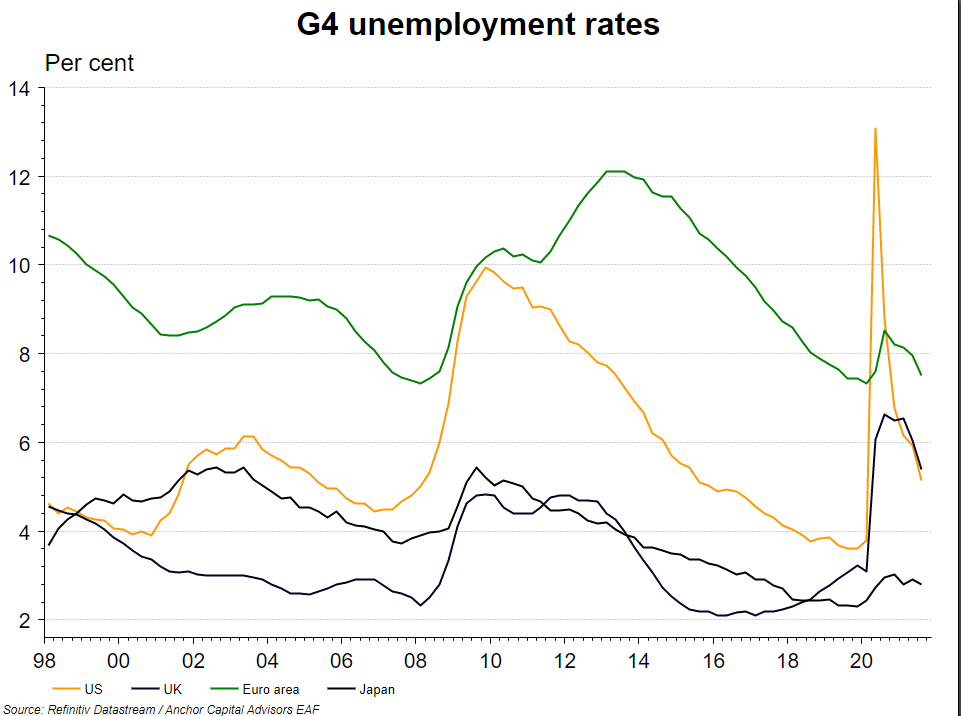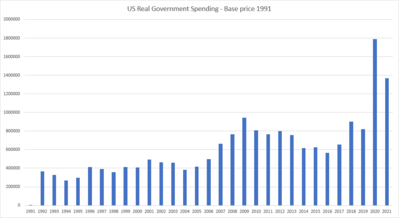Recovery plan or excessive public spending?
Since the 2008 crisis, the narrative in favor of public spending began to gain traction in the West. Public debt in terms of GDP rose to record highs during the last decade and over-leverage became the new normal. Like any addiction, when the system begins to develop resistance, the dose needs to be increased more and more to obtain the same effect.
"Desperate times need desperate measures"
The problem begins when these measures become ordinary. Public spending has increased in all major economies over the past 20 years, so the fiscal stimulus soaring from the pandemic are simply a continuation of "kicking the problem forward." Take the case of the United States: since 1991, in real terms (adjusted for inflation), public spending has increased almost 5 times!

Is the economy so hit?
The latest inflation, consumption and unemployment data indicate a strong recovery. This of course does not mean that everything is solved, but the situation seems on track so that the private sector can maintain itself without the aids of public sector. Still, the Fed is determined to run behind the curve, and will not act until it is too late. Federal governments think the same way.

Potential risks
State treasuries in almost all developed countries are anemic, with high levels of debt, spending and monetary issuance. The next crisis is just around the corner and we do not know what form it may take: climatic, financial, epidemiological. Added to this is the threat of inflation, which, although it may reduce the burden of debt in the public sector, its counterpart is a rise in interest rates to alleviate it, which generates recessive effects in the private sector.
We need Anti-Fragile Institutions
Modern institutions do not have a mechanism that encourages them to take care of citizens' capital, which generates a clear lack of savings in times of economic prosperity. Perhaps a true recovery plan would include generating instruments that increase the stability and robustness of our economy, to reduce this fragility that leads us to increase spending and indebtedness exponentially on a recurring basis.

